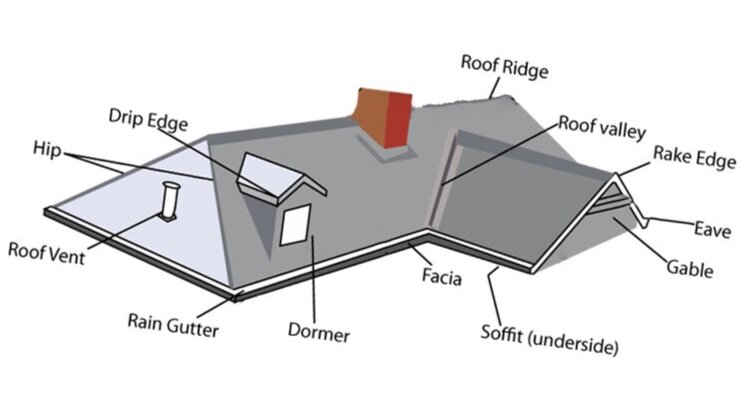Roofing Terms Glossary... Huh?
Ever talked to a contractor and felt like you were listening to the Charlie Brown teacher?
Wah...Wah...Wah…
We are here to help you understand the roofing verbiage and what exactly is protecting you from outside elements.
Algae Discoloration: A type of roof discoloration caused by algae. Commonly described incorrectly as fungus growth.
Blisters: bubbles that may appear on the surface of asphalt roofing. Typically caused by excessive heat from poorly ventilated and over-heated roof systems.
Bundle: A package of shingles. There are typically 3, 4 or 5 bundles per square.
Caulk: To fill a joint with mastic or asphalt cement to prevent leaks.
Condensation: The change of water from vapor to liquid when warm, moisture-laden air comes in contact with a cold surface.
Deck: Roof decking is the foundation of your roofing system that connects the roof to your house. It’s the base that lays on top of the structural trusses—the “bones” of your attic—to cover the rafters and support the weight of the roofing shingles.
Drip Edge: Usually metal strip used on eaves and rakes to allow for water run off without damaging underlying materials
Eave: The horizontal edge of a roof that projects over the outside wall.
Eaves Edge: All the boards running along the edge of the roof or eaves. Also known as a fascia or roof edge.
Fascia: A decorative board extending down from the roof edge either at the eave or at the rake.
Felt: Fibrous material saturated with asphalt and used as an underlayment or sheathing paper. Goes on before the shingles.
Flashing: (joint covers) Flashing can be flexible or rigid and is made of galvanized steel, aluminum or plastic. It is a type of resistant moulding that prevents water leakage. Flashing is found in valleys and at the bases of chimneys, walls, roof vents and plumbing vents.
Gable: The upper triangular portion of a sidewall that comes to a point at the ridge of a double sloping roof.
Granules: Typically ceramic-coated colored crushed rock that is applied to the exposed surface of asphalt roofing products.
Laminated Shingles: Shingles containing more than one layer to create extra thickness. Also called three-dimensional shingles or architectural shingles.
Rafter: Structural wood, usually slanted, to which sheathing is attached.
Rake: The slanting edge of a gable roof at the end wall of the house.
Ridge: The uppermost, horizontal external angle formed by the intersection of two sloping roof planes.
Roof Vent: Enclosed structure made of metal or plastic featuring openings and fins, ensuring that the attic space is properly ventilated. The most effective vents have four open sides and rise above the roof, which allows them to capture the wind from all directions to produce a suction effect. To achieve full ventilation of the attic, there must be an air inlet at the base of the roof, through perforations in the eaves soffit. Most often made of perforated aluminium, this piece closes off the underside of the eaves.
Sheathing: Exterior grade boards used as a roof deck.
Slope: The degree of incline of a roof plane.
Soffit: The area that encloses the underside of that portion of the roof that extends out beyond the sidewalls of the house.
Square: A unit of roof measure covering 100 square feet.
Underlayment: The material (usually roofing felt) laid on top of sheathing before shingles are applied.
Valley: Valleys are the parts of a roof where two planes intersect. Here is where leaves and debris easily collect and a large volume of rain and melting snow water run.
Weathering: Changes in color, texture or efficiency brought about by exposure to outside elements.

